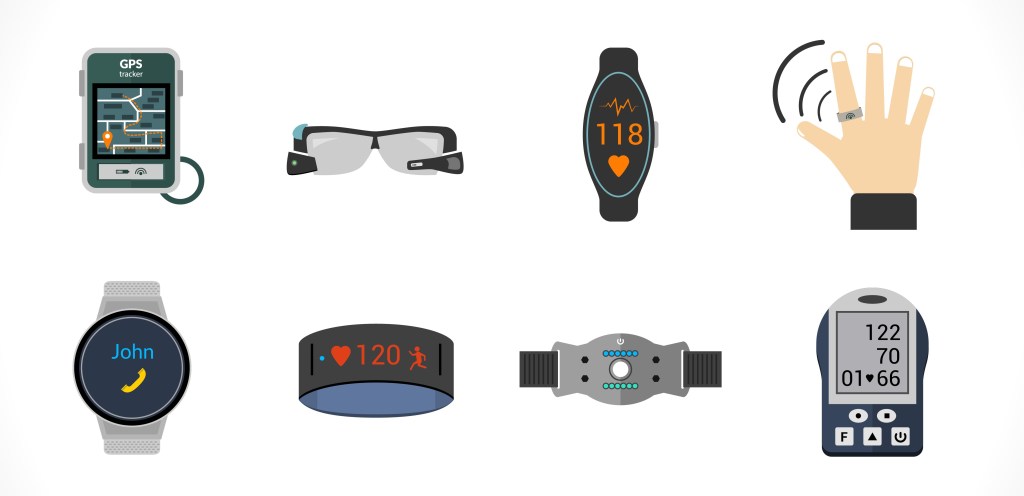Wen Hsieh
For years now, wearable devices have promised to help us lead healthier lives, experience life in new ways, and become less dependent on our smartphones.
2015 was a very important year for wearables as the market took several important steps towards delivering on these promises.
Apple released their much anticipated Apple Watch. GoPro launched a host of new action camera products. FitBit went public with a market cap of over $6B. And Oculus and Microsoft solidified their plans for Rift and Hololens, respectively.
Despite the positive momentum, the expectations of the market have not yet been met, as many of these wearable devices will be found tucked away in a drawer or a nightstand after only a few weeks of use.
Fortunately, technology can and will solve the majority of shortcomings associated with wearables today. To use a baseball analogy, we are only in the third inning, and there is still a lot of ballgame to be played. Several of us got together in the podcast studio at KPCB to discuss our thoughts on the future of wearable technology – below is our discussion some of our takeaways.
Battery Life is King
Battery life is by far the biggest obstacle preventing broad market adoption and retention. Our wearable devices should last weeks and months, not hours and days. Power consumption of key components like processors, radios, memories, and sensors are the primary culprit.
Almost all of these components are hacked together from legacy mobile phone parts that were not designed for wearables, and therefore struggle to satisfy the product needs around power consumption (battery life), form factor (shape and size), and weight of the wearable.
Unfortunately, this ultimately leads to underwhelming wearables functionality and feature set. Let’s take a moment to reflect on the Apple Watch. This is a beautiful, best-in-class product, but our belief is that power consumption and form factor played a significant role in determining the feature set.
It appears that the Apple Watch did not have the power budget and the space availability for a cellular radio. This prevented the watch from operating independently as a standalone mobile device, instead of being an expensive peripheral to the iPhone. A unique set of components, designed from the ground-up for wearables, would have not only extended the battery life, reduced the form factor, but would have also provided the optionality for additional critical features.
Virtual and augmented reality headsets also suffer from power consumption issues. These devices require high resolution displays and optics, fast CPUs, fast GPUs and numerous always-on sensors in order to deliver a meaningful user experience.
Unfortunately today’s versions of these AR/VR headsets cannot encompass all of these components in small, untethered form factors, forcing most companies to build a tethered companion unit for processing and power delivery. Weight is an equally important criteria. Every ounce added to the headset could create additional discomfort to the neck area. Not only do these components need to consume less power, they need to be significantly smaller and lighter.
The Next Phase of Wearables
At KPCB, we’re still huge believers in wearables. We are constantly thinking about what’s technically missing that would enable wearables to become the next multi-billion unit and transformational market.
The first step is to redesign all of the key components with a clear focus on significantly lower power – aim for N times lower, where N is an integer! Redefining the system architecture and building-block device structures for displays, processors, memories, sensors, radios and batteries is a must.
Companies developing processors, new memory technologies, new displays and next generation connectivity are well-positioned as key enablers for next generation wearables.
In order to make this next big leap, we need to begin think about these devices not as wearables, but as pervasive devices that are integrated into every facet of our lives.
Tiny in size, little to no energy consumed during operation, constantly processing, continuously mapping our environment and gathering data, and communicating device-to-devices. In order to make this world a reality, we’ll need almost invisible components that can scavenge energy from kinetic movement and from surrounding power sources such as wireless signals.
We’ll need batteries that will rarely need to be recharged. And we’ll need new ways to embed electronics into plastic, wood, metals and fabric.
The Next Six Innings…
Every new successful hardware industry goes through a predictable cycle on the path to selling a billion units.
The first step requires a new suite of breakthrough components to meet the market demands around feature set, form factor and battery life.
This happened in the early 2000s as the PC industry made the shift from desktop computers to laptop computers. It happened again in the late 2000s as the phone industry shifted from feature phones to smartphones.
After the hardware matures, the innovation moves to software and services. Think about this within the context of the smartphone market. When the hardware was fast enough, and could be used for a full day on one charge, we were introduced to new always-on services.
The app store took off. We experienced entirely new forms of communications and the rise of mobile gaming. We saw new services around cloud backup and data security emerge.
Over the next ten years, we can imagine a world where instead of wearing a smartband or smartwatch to track activity and heart rate, we could just put on our favorite shirt.
The buttons on that shirt would capture data from our bodies and source power from the ambient environment. These buttons would communicate to the world around us, and would never need to be recharged. Software and services would tell us when to hydrate, when to get out under the sun, when to take it easy, and when best to sleep. That’s the pervasive computing world of the future
*Ambiq Micro and Crossbar are current KPCB portfolio companies.






























Comment